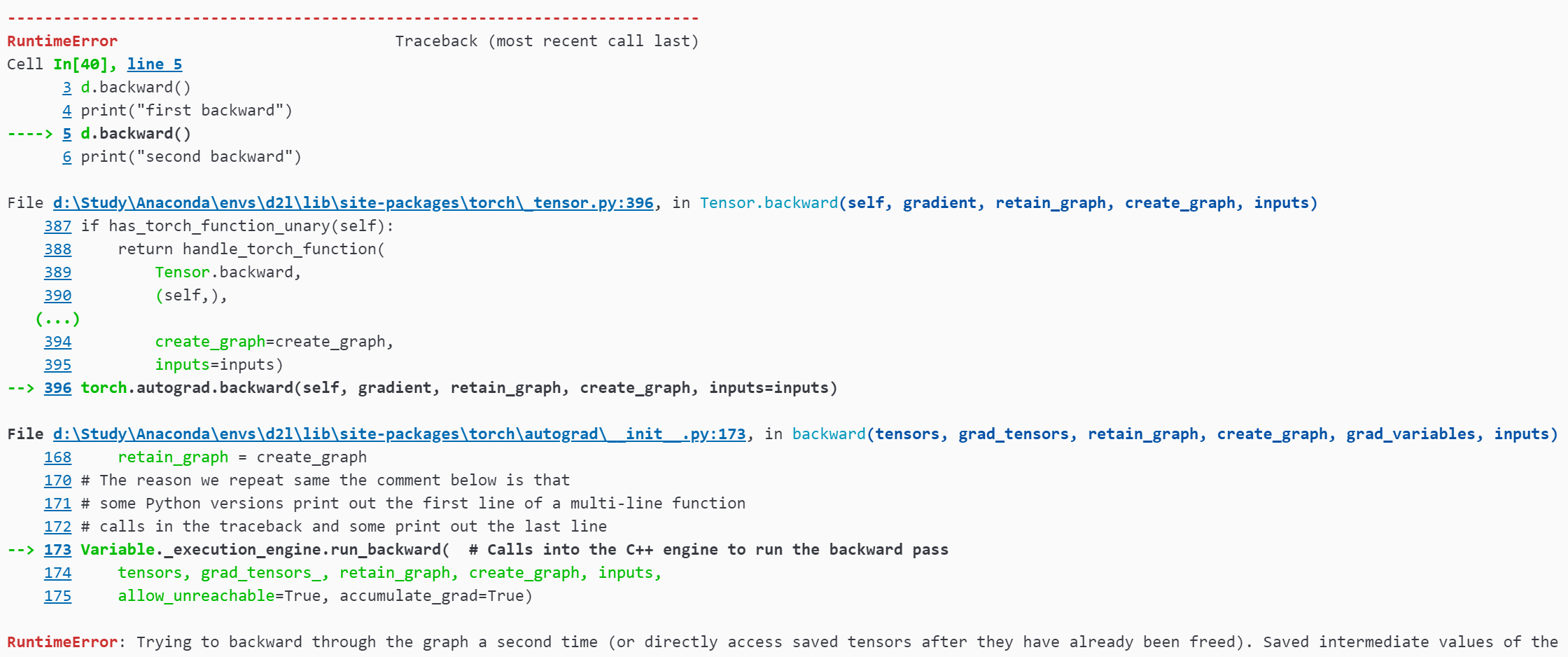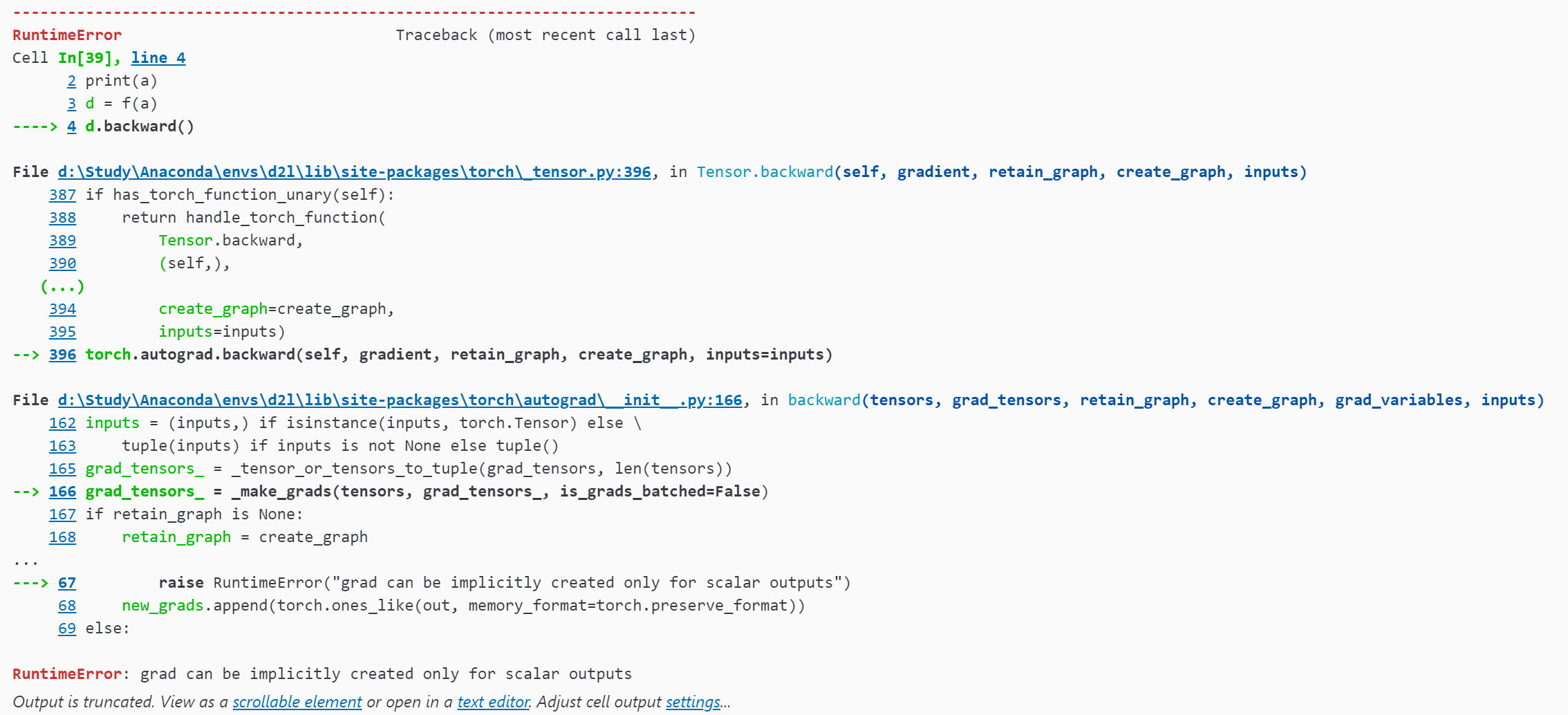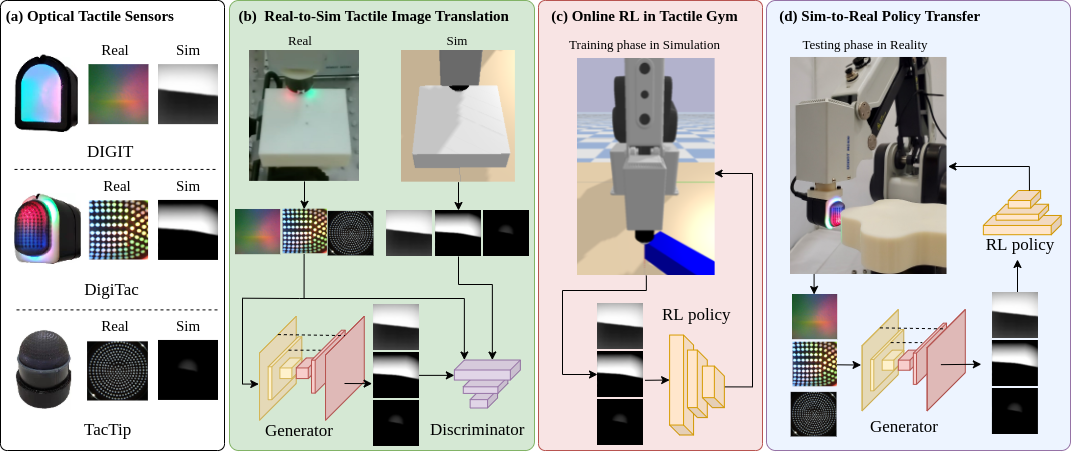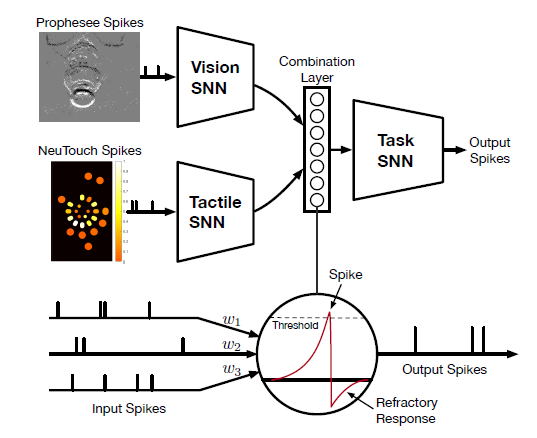Ch2 预备知识

Ch2 预备知识
望秋弥茂2.1数据操作
2.1.5 节省内存
- ⽤X[:] = X + Y或X += Y来减少操作的内存开销
1
2X[:] = X + Y
X += Y
2.2 数据预处理
2.2.1 读取数据集
1 | # 写入数据 |
2.2.2 处理缺失值
1 | inputs = inputs.fillna(inputs.mean()) # 同⼀列的均值替换“NaN”项 |
2.2.3 转换为张量格式
1 | import torch |
2.3 线性代数
2.3.2 向量
1 | x[3] # 访问索引元素 |
- 张量的维度用来表示张量具有的轴数
2.3.3 矩阵
1 | A = torch.arange(20, dtype=torch.float32).reshape(5, 4) # 更改维度5×4 |
2.3.4 张量
1 | X = torch.arange(24).reshape(2, 3, 4) # 2个3×4的矩阵 |
2.3.5 张量算法的基本性质

2.3.6 降维
1 | A = (tensor([[ 0., 1., 2., 3.], |
1 | A_sum_axis0 = A.sum(axis=0) |
1 | (tensor([40., 45., 50., 55.]), torch.Size([4])) |
1 | A_sum_axis1 = A.sum(axis=1) |
1 | (tensor([ 6., 22., 38., 54., 70.]), torch.Size([5])) |
1 | A.sum(axis=[0, 1]) # 结果和A.sum()相同 |
非降维求和
1 | sum_A = A.sum(axis=1, keepdims=True) |
1 | tensor([[ 6.], |
- sum_A在对每⾏进⾏求和后仍保持两个轴, 直接除可以获得每一行自己的平均数,元素/该行总和
1
A / sum_A
- 某个轴进行累积求和
1
A.cumsum(axis=0)
1
2
3
4
5tensor([[ 0., 1., 2., 3.],
[ 4., 6., 8., 10.],
[12., 15., 18., 21.],
[24., 28., 32., 36.],
[40., 45., 50., 55.]])
2.3.7 点积
1 | torch.dot(x, y) |
2.3.8 矩阵-向量积
1 | A.shape, x.shape, torch.mv(A, x) |
1 | (torch.Size([5, 4]), torch.Size([4]), tensor([ 14., 38., 62., 86., 110.])) |
2.3.9 矩阵-矩阵乘法
1 | torch.mm(A, B) # 标准矩阵乘法,与Hadamard积(点对点乘积)不同 |
2.3.10 范数
- $L_2$ 范数中常常省略下标2,也就是说 $||x||$ 等同于 $||x||_2$
$$
|\mathbf{x}|2=\sqrt{\sum{i=1}^n x_i^2}
$$
1 | torch.norm(u) |
- $L_1$ 范数
$$
|\mathbf{x}|1=\sum{i=1}^n\left|x_i\right|
$$
1 | torch.abs(u).sum() |
- $L_p$ 范数定义
$$
|\mathbf{x}|p=\left(\sum{i=1}^n\left|x_i\right|^p\right)^{1 / p}
$$ - Frobenius 范数
- Frobenius范数满⾜向量范数的所有性质,它就像是矩阵形向量的 $L_2$ 范数。
$$
|\mathbf{X}|F=\sqrt{\sum{i=1}^m \sum_{j=1}^n x_{i j}^2}
$$
- Frobenius范数满⾜向量范数的所有性质,它就像是矩阵形向量的 $L_2$ 范数。
1 | torch.norm(torch.ones((4, 9))) |
练习
1.证明⼀个矩阵 $A$ 的转置的转置是A,即 $(A^T)^T = A$
2.给出两个矩阵 $A$ 和 $B$ ,证明“它们转置的和”等于“它们和的转置”,即$A^T+B^T=(A+B)^T$
3.给定任意⽅阵 $A$ , $A+A^T$ 总是对称的吗?为什么?
4.本节中定义了形状(2; 3; 4)的张量X。len(X)的输出结果是什么?
1 | X = torch.ones(2, 3, 4) |
1 | 2 |
5.对于任意形状的张量X, len(X)是否总是对应于X特定轴的⻓度?这个轴是什么?
6.运⾏A/A.sum(axis=1),看看会发⽣什么。请分析⼀下原因?
- 矩阵除以一维张量,要看矩阵列数是否等于张量的元素个数(也可以看作是列数)是否相等,如果相等就可以实现,将矩阵该列的所有元素除以对应列的张量元素。否则会报错
1
2
3
4
5
6
7
8
9A = torch.arange(20).reshape(5, 4)
print(A, A.shape)
print(A.sum(axis=0), A.sum(axis=0).shape)
print(A/A.sum(axis=0), (A/A.sum(axis=0)).shape)
print(A.sum(axis=1), A.sum(axis=1).shape)
print(A.sum(axis=1, keepdims=True), A.sum(axis=1, keepdims=True).shape)
print(A/A.sum(axis=1, keepdims=True), (A/A.sum(axis=1, keepdims=True)).shape)
print(A/A.sum(axis=1), (A/A.sum(axis=1)).shape)1
2
3
4
5
6
7
8
9
10
11
12
13
14
15
16
17
18tensor([[ 0, 1, 2, 3],
[ 4, 5, 6, 7],
[ 8, 9, 10, 11],
[12, 13, 14, 15],
[16, 17, 18, 19]]) torch.Size([5, 4])
tensor([40, 45, 50, 55]) torch.Size([4])
tensor([[0.0000, 0.0222, 0.0400, 0.0545],
[0.1000, 0.1111, 0.1200, 0.1273],
[0.2000, 0.2000, 0.2000, 0.2000],
[0.3000, 0.2889, 0.2800, 0.2727],
[0.4000, 0.3778, 0.3600, 0.3455]]) torch.Size([5, 4])
tensor([ 6, 22, 38, 54, 70]) torch.Size([5])
tensor([[ 6], [22], [38], [54], [70]]) torch.Size([5, 1])
tensor([[0.0000, 0.1667, 0.3333, 0.5000],
[0.1818, 0.2273, 0.2727, 0.3182],
[0.2105, 0.2368, 0.2632, 0.2895],
[0.2222, 0.2407, 0.2593, 0.2778],
[0.2286, 0.2429, 0.2571, 0.2714]]) torch.Size([5, 4])
7.考虑⼀个具有形状(2; 3; 4)的张量,在轴0、1、2上的求和输出是什么形状?
1 | X = torch.arange(24).reshape(2, 3, 4) |
1 | tensor([[[ 0, 1, 2, 3], |
8.为linalg.norm函数提供3个或更多轴的张量,并观察其输出。对于任意形状的张量这个函数计算得到什么?
1 | X = torch.ones(2, 3, 4) |
1 | [[[1. 1. 1. 1.] |
2.4 微积分
将拟合模型的任务分解为两个关键问题:
- #优化(optimization) :⽤模型拟合观测数据的过程
- #泛化(generalization) :数学原理和实践者的智慧,能够指导我们⽣成出有效性超出⽤于训练的数据集本⾝的模型。
2.4.1 导数与微分
- #@save是⼀个特殊的标记,会将对应的函数、类或语句保存在d2l包中
- set_axes函数⽤于设置由matplotlib⽣成图表的轴的属性。
1
2
3
4
5
6
7
8
9
10
11
12#@save
def set_axes(axes, xlabel, ylabel, xlim, ylim, xscale, yscale, legend):
"""设置matplotlib的轴"""
axes.set_xlabel(xlabel)
axes.set_ylabel(ylabel)
axes.set_xscale(xscale)
axes.set_yscale(yscale)
axes.set_xlim(xlim)
axes.set_ylim(ylim)
if legend:
axes.legend(legend)
axes.grid() - 定义⼀个plot函数来简洁地绘制多条曲线
1
2
3
4
5
6
7
8
9
10
11
12
13
14
15
16
17
18
19
20
21
22
23
24
25
26
27
28
29
30
31#@save
def plot(X, Y=None, xlabel=None, ylabel=None, legend=None, xlim=None,
ylim=None, xscale='linear', yscale='linear',
fmts=('-', 'm--', 'g-.', 'r:'), figsize=(3.5, 2.5), axes=None):
"""绘制数据点"""
if legend is None:
legend = []
set_figsize(figsize)
axes = axes if axes else d2l.plt.gca()
# 如果X有⼀个轴,输出True
def has_one_axis(X):
return (hasattr(X, "ndim") and X.ndim == 1 or isinstance(X, list)
and not hasattr(X[0], "__len__"))
if has_one_axis(X):
X = [X]
if Y is None:
X, Y = [[]] * len(X), X
elif has_one_axis(Y):
Y = [Y]
if len(X) != len(Y):
X = X * len(Y)
axes.cla()
for x, y, fmt in zip(X, Y, fmts):
if len(x):
axes.plot(x, y, fmt)
else:
axes.plot(y, fmt)
set_axes(axes, xlabel, ylabel, xlim, ylim, xscale, yscale, legend)
2.4.2 偏导数
$$ \frac{\partial y}{\partial x_i} = \lim_{h \rightarrow 0} \frac{f(x_1, \ldots, x_{i-1}, x_i+h, x_{i+1}, \ldots, x_n) - f(x_1, \ldots, x_i, \ldots, x_n)}{h}.$$
- 对于偏导数的表示,以下是等价的:
$$\frac{\partial y}{\partial x_i} = \frac{\partial f}{\partial x_i} = f_{x_i} = f_i = D_i f = D_{x_i} f.$$
2.4.3 梯度
- 设函数$f:\mathbb{R}^n\rightarrow\mathbb{R}$的输入是一个$n$维向量$\mathbf{x}=[x_1,x_2,\ldots,x_n]^\top$,并且输出是一个标量。
- 函数$f(\mathbf{x})$相对于$\mathbf{x}$的梯度是一个包含$n$个偏导数的向量:
$$\nabla_{\mathbf{x}} f(\mathbf{x}) = \bigg[\frac{\partial f(\mathbf{x})}{\partial x_1}, \frac{\partial f(\mathbf{x})}{\partial x_2}, \ldots, \frac{\partial f(\mathbf{x})}{\partial x_n}\bigg]^\top$$ - 其中$\nabla_{\mathbf{x}} f(\mathbf{x})$通常在没有歧义时被$\nabla f(\mathbf{x})$取代。
- 假设$\mathbf{x}$为$n$维向量,在微分多元函数时经常使用以下规则:
- 对于所有$\mathbf{A} \in \mathbb{R}^{m \times n}$,都有$\nabla_{\mathbf{x}} \mathbf{A} \mathbf{x} = \mathbf{A}^\top$
- 对于所有$\mathbf{A} \in \mathbb{R}^{n \times m}$,都有$\nabla_{\mathbf{x}} \mathbf{x}^\top \mathbf{A} = \mathbf{A}$
- 对于所有$\mathbf{A} \in \mathbb{R}^{n \times n}$,都有$\nabla_{\mathbf{x}} \mathbf{x}^\top \mathbf{A} \mathbf{x} = (\mathbf{A} + \mathbf{A}^\top)\mathbf{x}$
- $\nabla_{\mathbf{x}} |\mathbf{x} |^2 = \nabla_{\mathbf{x}} \mathbf{x}^\top \mathbf{x} = 2\mathbf{x}$
- 同样,对于任何矩阵$\mathbf{X}$,都有$\nabla_{\mathbf{X}} |\mathbf{X} |_F^2 = 2\mathbf{X}$。
2.4.4 链式法则
练习
1.绘制函数$y = f(x) = x^3 - \frac{1}{x}$和其在$x = 1$处切线的图像。
1 | def f(x): |
2.求函数$f(\mathbf{x}) = 3x_1^2 + 5e^{x_2}$的梯度。
$$
\nabla_{\mathbf{x}} f(\mathbf{x}) = [6x_1, 5e^{x_2}]^\top
$$
3.函数$f(\mathbf{x}) = |\mathbf{x}|_2$的梯度是什么?
$$
|\mathbf{x}|2=\sqrt{\sum{i=1}^n x_i^2}
$$
$$
\begin{equation}
\begin{aligned}
\nabla f(\mathbf{x}) &= \nabla |\mathbf{x}|2 \
& =\nabla \sqrt{\sum{i=1}^n x_i^2} \
& =\bigg[\frac{\partial f(\mathbf{x})}{\partial x_1}, \frac{\partial f(\mathbf{x})}{\partial x_2}, \ldots, \frac{\partial f(\mathbf{x})}{\partial x_n}\bigg]^\top \
& =\bigg[\frac{\partial \sqrt{\sum_{i=1}^n x_i^2} }{\partial x_1}, \frac{\partial \sqrt{\sum_{i=1}^n x_i^2} }{\partial x_2}, \ldots, \frac{\partial \sqrt{\sum_{i=1}^n x_i^2} }{\partial x_n}\bigg]^\top \
& = \frac{1}{2|\mathbf{x}|_2}\bigg[2(x_1), 2(x_2), \ldots, 2(x_n)\bigg]^\top \
& = \frac{1}{|\mathbf{x}|_2}\bigg[x_1, x_2, \ldots, x_n\bigg]^\top \
& = \frac{\mathbf{x}}{|\mathbf{x}|_2}
\end{aligned}
\end{equation}
$$
4.尝试写出函数$u = f(x, y, z)$,其中$x = x(a, b)$,$y = y(a, b)$,$z = z(a, b)$的链式法则。
$$
\begin{align}
\frac{\partial u}{\partial a} = \frac{\partial u}{\partial x}\frac{\partial x}{\partial a}+\frac{\partial u}{\partial y}\frac{\partial y}{\partial a}+\frac{\partial u}{\partial z}\frac{\partial z}{\partial a} \
\frac{\partial u}{\partial a} = \frac{\partial u}{\partial x}\frac{\partial x}{\partial a}+\frac{\partial u}{\partial y}\frac{\partial y}{\partial a}+\frac{\partial u}{\partial z}\frac{\partial z}{\partial a}
\end{align}
$$
2.5 自动微分
2.5.0 深度学习框架
- 通过⾃动计算导数,即⾃动微分(automatic differentiation)来加快求导。
- 根据设计好的模型,系统会构建⼀个计算图(computational graph),来跟踪计算是哪些数据通过哪些操作组合起来产⽣输出。
- ⾃动微分使系统能够随后反向传播梯度。这⾥,反向传播(backpropagate) 意味着跟踪整个计算图,填充关于每个参数的偏导数。
2.5.1 ⼀个简单的例⼦
1 | x.requires_grad_(True) # 等价于x=torch.arange(4.0,requires_grad=True) |
2.5.2 ⾮标量变量的反向传播
- 在默认情况下,PyTorch会累积梯度,需要清除之前的值
1
2
3
4x.grad.zero_()
# y = x.sum()
y.backward()
x.grad
2.5.3 分离计算
将某些计算移动到记录的计算图之外
- eg: 假设y是作为x的函数计算的,⽽z则是作为y和x的函数计算的。想象⼀下,我们想计算z关于x的梯度,但由于某种原因,希望将y视为⼀个常数
- 分离y来返回⼀个新变量u,该变量与y具有相同的值,但丢弃计算图中如何计算y的任何信息
- 梯度不会向后流经u到x
1
2
3
4
5
6x.grad.zero_()
y = x * x
u = y.detach() # 分离计算,设置u变量,但仅使用值,不考虑如何计算的,从而避免x的反向传播
z = u * x
z.sum().backward()
x.grad == u1
tensor([True, True, True, True])
2.5.4 Python控制流的梯度计算
- 使⽤⾃动微分的⼀个好处是:即使构建函数的计算图需要通过Python控制流(例如,条件、循环或任意函数调⽤),仍然可以计算得到的变量的梯度
练习
为什么计算⼆阶导数⽐⼀阶导数的开销要更⼤?
- 二阶相当于再复用一阶导数的计算
在运⾏反向传播函数之后,⽴即再次运⾏它,看看会发⽣什么。
在控制流的例⼦中,我们计算d关于a的导数,如果将变量a更改为随机向量或矩阵,会发⽣什么?
重新设计⼀个求控制流梯度的例⼦,运⾏并分析结果。
- 暂无
使$f(x)=\sin(x)$,绘制$f(x)$和$\frac{df(x)}{dx}$的图像,其中后者不使用$f’(x)=\cos(x)$。
1
2.6 概率
2.6.1 基本概率论
1 | %matplotlib inline |
1 | counts = multinomial.Multinomial(10, fair_probs).sample((500,)) |
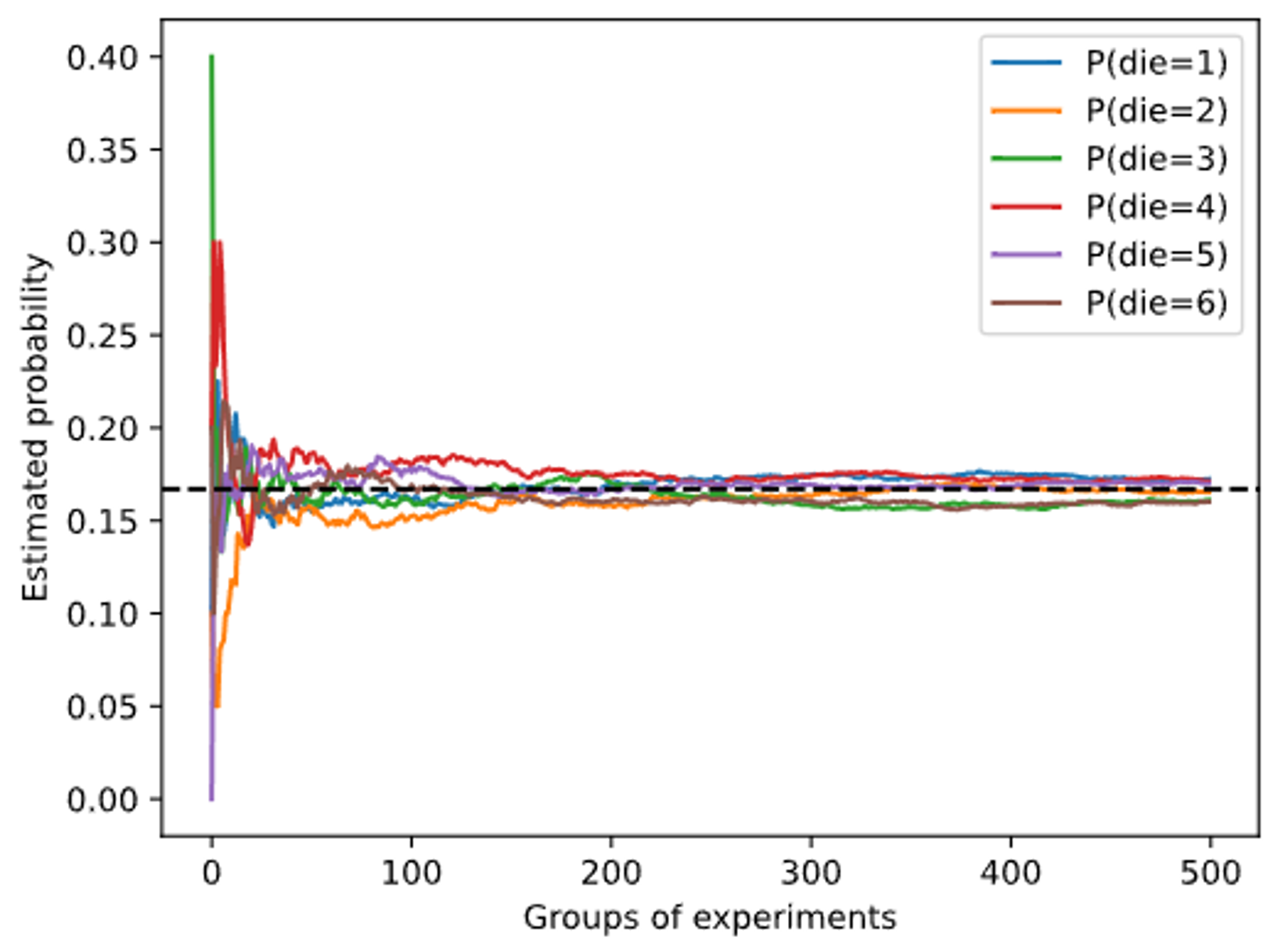
2.6.2 处理多个随机变量
$$P(B = b | A = a)$$
$$
P(A;B) = P(B|A)P(A)
$$
$$
P(A|B) = \frac{P(B|A)P(A)}{P(B)}
$$
$$
P(B) = \sum_{A}{P(A,B)}
$$
$$
P(A,B) = P(A)P(B)
$$
2.6.3 期望和⽅差
$$
E[X] = \sum_x{x P(X=x)} \qquad \text{离散随机变量}
$$
$$
E[X] = \int_x{x P(X=x)} \qquad \text{连续随机变量}
$$
$$
Var[X] = E[(X - E(X))^2] = E(X^2) - E(X)^2
$$
练习
- 进行$m=500$组实验,每组抽取$n=10$个样本。改变$m$和$n$,观察和分析实验结果。
- Center Limit Theorem 中心极限定理
- 给定两个概率为$P(\mathcal{A})$和$P(\mathcal{B})$的事件,计算$P(\mathcal{A} \cup \mathcal{B})$和$P(\mathcal{A} \cap \mathcal{B})$的上限和下限。(提示:使用友元图来展示这些情况。)
$$
max{({P(\mathcal{A}),P({\mathcal{B}}}))} \leq P(\mathcal{A} \cup \mathcal{B}) \leq P(\mathcal{A} )+P(\mathcal{B} )
$$
$$
0 \leq P(\mathcal{A} \cap \mathcal{B}) \leq min{({P(\mathcal{A}),P({\mathcal{B}}}))} )
$$ - 假设我们有一系列随机变量,例如$A$、$B$和$C$,其中$B$只依赖于$A$,而$C$只依赖于$B$,能简化联合概率$P(A, B, C)$吗?(提示:这是一个马尔可夫链。)
$$
\begin{equation}
\begin{aligned}
P(A,B,C) &= P(C|B)*P(B) \
&=P(C|B)*P(B|A)*P(A)
\end{aligned}
\end{equation}
$$ - 在2.6.2节中,第一个测试更准确。为什么不运行第一个测试两次,而是同时运行第一个和第二个测试?
- 也许是成本问题,只需要第二次的不精准测试,也可以大幅度提高推理在阳性反应下,患者真实患病的概率。同时可以避免,同种测试方法可能存在的误差和不为人知的错误。
